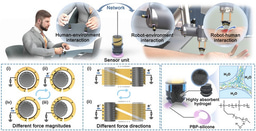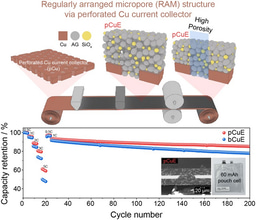PD-1 expression in γδ T cells: What does this mean?
Published in Cancer, Immunology, and Anatomy & Physiology
Checkpoint Inhibition (CPI)
James Allison and Tasuku Honjo received the Nobel Prize in 2018, in recognition of the profound impact of their discoveries on cancer therapy. Therapeutic inhibition of negative immune regulators has transformed the prognosis of many advanced malignancies, particularly those targeting the PD-1/PD-L1 checkpoint axis[1]. Unfortunately, despite this major advance in cancer treatment, most patients do not benefit from CPI therapy. Consequently, much effort has been devoted to understanding how these therapies may be exerting their anti-tumour effects.
Looking beyond Alpha Beta (αβ) T cells
Reinvigorating cytotoxic CD8+ αβ T cells is undoubtedly an important mechanism of action of CPIs. Understanding how these cells respond to checkpoint blockade has historically been a research priority, with good reason – these cells express inhibitory co-receptors, are often present within the tumour microenvironment and have been shown to associate with favourable responses to CPI therapy[2].
However, as the application of CPI becomes increasingly more widespread, evidence is accumulating to suggest that conventional αβ T cells are not the solitary immune cell targets of these treatments. There are cohorts of patients that remain responsive to checkpoint therapy, despite an apparent impairment in CD8+ αβ T cell immunosurveillance – for example, patients with MHC Class 1 deficient tumours[3], or those with low neoantigen load tumours[4]. Therefore, it seems reasonable to conclude that additional immune cell subsets are contributing to checkpoint therapy responses.
PD-1 expression in γδ T cells
Gamma Delta (γδ) T cells, particularly the tissue-associated γδ T cell expressing the Vδ1 γδ T cell receptor (TCR), have been shown to express PD-1 across a variety of human tissues, akin to cytotoxic CD8+ αβ T cells[3, 5-8]. Indeed, our group and others have demonstrated that a transcriptomic signature associated with these cells in pre-treatment tumour samples is predictive of response to anti-PD(L)-1 therapy[7, 9]. Collectively, this strongly implicates Vδ1+ γδ T cells as an effector cell type unleashed by anti-PD-(L)1 therapies.
However the biological relevance of PD-1 on Vδ1+ T cells remains unclear, relative to their CD8+ αβ T cell counterparts. We aimed to address this in our study. Specifically, does PD-1 mark a path towards functional exhaustion in Vδ1+ T cells, as it does in αβ T cells? Are these cells regulated by the PD-1/PD-L1 axis – i.e. are they inhibited by PD-1 ligands? And if so, can they subsequently be de-repressed by CPI?
Expanding human, tissue-derived Vδ1+ cells
This current lack of understanding is in part due to the logistical difficulties of isolating sufficient numbers of these cells for study. To address this, we adapted an ex vivo explant system to selectively expand these relatively rare cells from primary human skin samples[10]. This protocol does not involve any mechanical dissociation or enzymatic digestion and yields sufficient numbers of both CD8+ αβ T cells and Vδ1+ γδ T cells for downstream transcriptional and functional characterization. Importantly, this 6 week culture process does not involve exposure to TCR agonists, so their antigen experience reflected that of human T cells in vivo.
PD-1 isn’t a marker of dysfunction in Vδ1+ cells
Examination of our expanded, skin-derived Vδ1+ cells using flow cytometry revealed that a small but substantial proportion of these cells expressed PD-1. This was consistent with previous descriptions of these cells directly isolated from other epithelial tissues[5, 6]. We next sorted PD-1 positive and PD-1 negative Vδ1+ T cells and their equivalent CD8+ counterparts and characterized these 4 populations using the Nanostring nCounter Immune Exhaustion panel, which includes 700+ genes implicated in immune cell exhaustion.
We found that both PD-1+ Vδ1+ and CD8+ T cells upregulate tissue residency and downregulate cell egress-associated genes, compared to their PD-1 negative counterparts. However, not all genes were concordantly regulated across the two lineages. The expression of PD-1 in CD8+ T cells was associated with a significant loss of ZNF683 (encoding HOBIT), a gene which has recently been associated with favourable responses to anti-PD-1 blockade in both solid and haematological tumour settings[11, 12]. By contrast, ZNF683 expression was maintained in PD-1+ Vδ1+ cells, versus their PD-1 negative counterparts.
This pattern was not exclusive to ZNF683. PD-1+ Vδ1+ T cells maintain expression of a variety of genes associated with effective cancer immunosurveillance[13] – particularly cytolytic and T helper 1 associated genes such as FASLG and TNF, as well as activating Natural Killer receptors such as KLRK1 (encoding NKG2D) and NCR1 (encoding NKp46). PD-1+ CD8+ αβ T cells often lose expression of these genes compared to their PD-1 negative counterparts.
We sought to validate these transcriptional findings by examining the cells’ functional capabilities in vitro. We firstly stimulated our expanded, skin derived Vδ1+ cells and compared PD-1 positive and PD-1 negative cells’ capacity to degranulate and produce cytokines. Strikingly, PD-1+ Vδ1+ cells degranulate and produce significantly more cytokines in comparison with PD-1 negative Vδ1+ cells.
PD-1+ Vδ1+ cells are regulated by the PD-1/PD-L1 axis
When PD-1+ Vδ1+ cells are exposed to plate-bound PD-L1, we observed a clear inhibition of degranulation and production of effector cytokines following T cell receptor (TCR) stimulation. We could partially rescue this inhibition by adding atezolizumab, a clinical grade anti-PD-L1 antibody, to the culture.
Vδ1+ cells within melanoma predicts response to CPI therapy
Finally, we re-analyzed 5 public transcriptomic data sets generated from patients with advanced melanoma to establish whether we see comparable biology in a human disease setting[14-18]. Using TRDV1 gene expression as a surrogate for Vδ1+ T cell infiltration, we found that patients that were deemed responsive to CPI therapy expressed significantly higher levels of TRDV1 transcripts, in comparison to non-responders. Conversely, this correlation was not observed for TRBC2, CD4 and CD8B, which are transcriptional surrogates for CD4+ and CD8+ αβ T cells.
To further implicate Vδ1+ T cells, which are likely neoantigen-independent[5, 13, 19], we delved deeper into the largest of these published transcriptomic data sets[17] and again examined the association of TRDV1 with treatment response. However, this time we further segregated patients by above or below median neoantigen loads.
We saw a striking association of Vδ1+ T cells with response to CPI therapy in the context of low neoantigen loads. This was less apparent in the high neoantigen setting, consistent with the described biology of these cells[13, 19].
Concluding thoughts
PD-1 expression in Vδ1+ T cells does not seemingly fit the conventional paradigm of differentiation towards exhaustion, as defined in CD8+ αβ T cells. However, they do appear to be functionally regulated by this immune checkpoint axis. Furthermore, these cells appear to be an effector target of CPI therapy, given the association of TRDV1 with clinical response (particularly in the low neoantigen load setting).
This provokes further questions moving forward – for example, what are the tumour recognition modalities that these cells employ to recognize cancer cells? Furthermore, if the γδ TCR is implicated, what are the ligands that these cells see in a tumour setting?
References
- Larkin, J., et al., Five-Year Survival with Combined Nivolumab and Ipilimumab in Advanced Melanoma. N Engl J Med, 2019. 381(16): p. 1535-1546.
- Sade-Feldman, M., et al., Defining T Cell States Associated with Response to Checkpoint Immunotherapy in Melanoma. Cell, 2018. 175(4): p. 998-1013.e20.
- de Vries, N.L., et al., γδ T cells are effectors of immunotherapy in cancers with HLA class I defects. Nature, 2023. 613(7945): p. 743-750.
- McGrail, D.J., et al., High tumor mutation burden fails to predict immune checkpoint blockade response across all cancer types. Ann Oncol, 2021. 32(5): p. 661-672.
- Wu, Y., et al., An innate-like Vδ1(+) γδ T cell compartment in the human breast is associated with remission in triple-negative breast cancer. Sci Transl Med, 2019. 11(513).
- Zakeri, N., et al., Characterisation and induction of tissue-resident gamma delta T-cells to target hepatocellular carcinoma. Nat Commun, 2022. 13(1): p. 1372.
- Rancan, C., et al., Exhausted intratumoral Vδ2(-) γδ T cells in human kidney cancer retain effector function. Nat Immunol, 2023. 24(4): p. 612-624.
- Foord, E., et al., Characterization of ascites- and tumor-infiltrating γδ T cells reveals distinct repertoires and a beneficial role in ovarian cancer. Sci Transl Med, 2021. 13(577).
- Wu, Y., et al., A local human Vδ1 T cell population is associated with survival in nonsmall-cell lung cancer. Nat Cancer, 2022. 3(6): p. 696-709.
- Clark, R.A., et al., The vast majority of CLA+ T cells are resident in normal skin. J Immunol, 2006. 176(7): p. 4431-9.
- Oliveira, G., et al., Preexisting tumor-resident T cells with cytotoxic potential associate with response to neoadjuvant anti-PD-1 in head and neck cancer. Sci Immunol, 2023. 8(87): p. eadf4968.
- Parry, E.M., et al., ZNF683 marks a CD8(+) T cell population associated with anti-tumor immunity following anti-PD-1 therapy for Richter syndrome. Cancer Cell, 2023. 41(10): p. 1803-1816.e8.
- Mensurado, S., R. Blanco-Domínguez, and B. Silva-Santos, The emerging roles of γδ T cells in cancer immunotherapy. Nat Rev Clin Oncol, 2023. 20(3): p. 178-191.
- Hugo, W., et al., Genomic and Transcriptomic Features of Response to Anti-PD-1 Therapy in Metastatic Melanoma. Cell, 2016. 165(1): p. 35-44.
- Riaz, N., et al., Tumor and Microenvironment Evolution during Immunotherapy with Nivolumab. Cell, 2017. 171(4): p. 934-949.e16.
- Auslander, N., et al., Robust prediction of response to immune checkpoint blockade therapy in metastatic melanoma. Nat Med, 2018. 24(10): p. 1545-1549.
- Liu, D., et al., Integrative molecular and clinical modeling of clinical outcomes to PD1 blockade in patients with metastatic melanoma. Nat Med, 2019. 25(12): p. 1916-1927.
- Du, K., et al., Pathway signatures derived from on-treatment tumor specimens predict response to anti-PD1 blockade in metastatic melanoma. Nat Commun, 2021. 12(1): p. 6023.
- Zlatareva, I. and Y. Wu, Local γδ T cells: translating promise to practice in cancer immunotherapy. Br J Cancer, 2023. 129(3): p. 393-405.
Follow the Topic
-
Nature Cancer

This journal aims to provide a unique forum through which the cancer community will learn about the latest, most significant cancer-related advances across the life, physical, applied and social sciences.
Ask the Editor - Immunology, Pathogenesis, Inflammation and Innate Immunity
Got a question for the editor about the complement system in health and disease? Ask it here!
Continue reading announcement




Please sign in or register for FREE
If you are a registered user on Research Communities by Springer Nature, please sign in